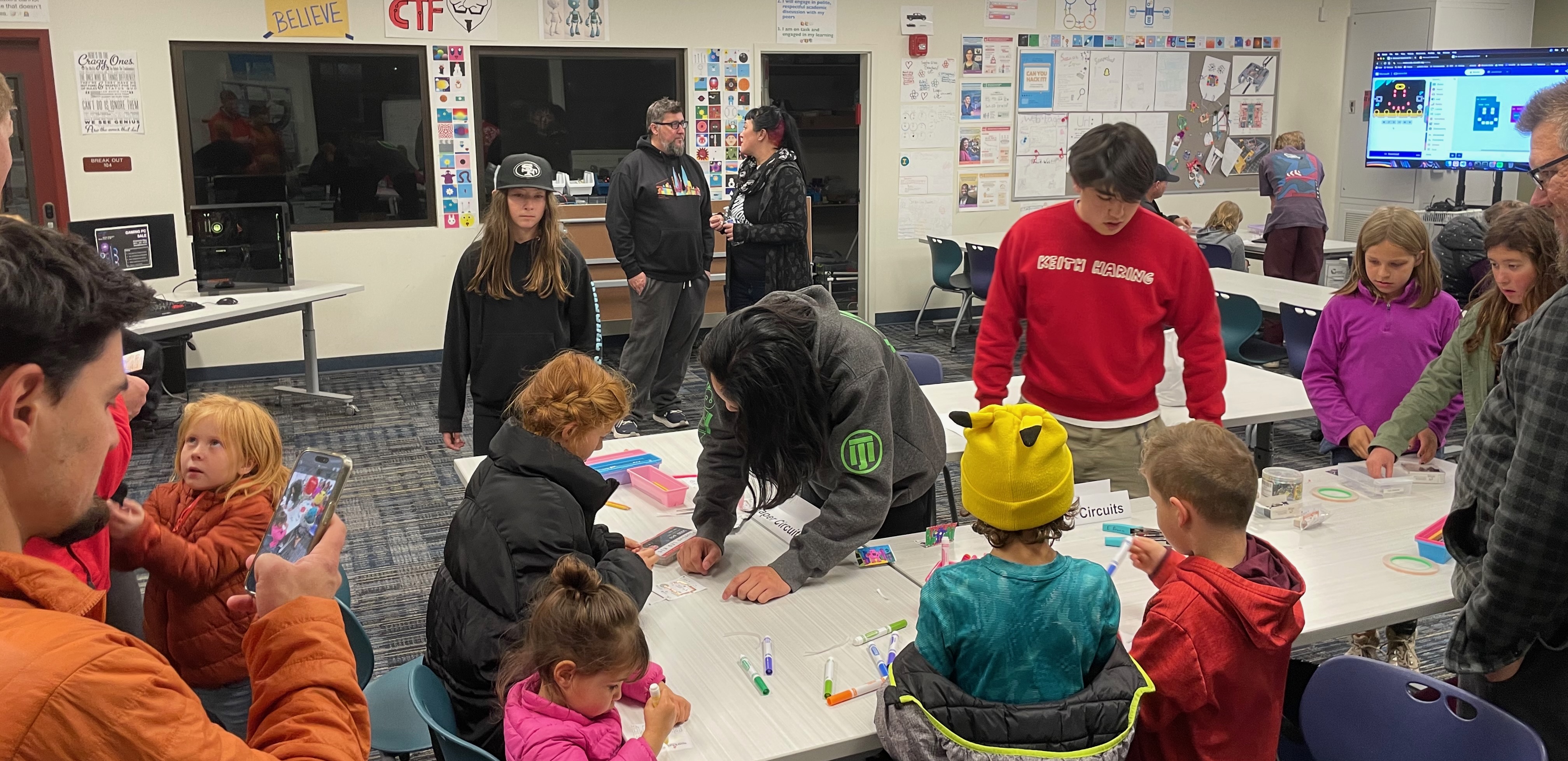When High Schoolers Teach Elementary: SLE Science Night Success

Last Friday, my high school Computer Science Honor Society and ROV teams spent their afternoon transforming my classroom, makerspace, and our pool into hands-on science stations for Family Science Night. What started as a service project became a powerful reminder of how learning happens when students teach students.
More Than Service Hours
Thirty-one hours of community service were logged that afternoon, but the real impact was harder to measure. Watching high school students patiently guide kindergarteners through simple circuits, seeing middle schoolers explain underwater robotics to fascinated parents, and observing the natural mentorship that emerged - these moments reminded me why I teach.
The setup was ambitious: our ROV teams demonstrated their underwater robots at the pool while Computer Science Honor Society students ran coding activities, electronics workshops, and problem-solving challenges in classrooms and the makerspace. Elementary families rotated through stations, with high school mentors adapting their explanations for audiences ranging from curious 5-year-olds to engaged parents.
The Teaching Moment
What struck me most was watching my typically reserved high school students light up as they became teachers. One student who rarely speaks up in AP class spent an hour patiently helping young children create circuits. Another beamed as elementary students called him “the robot expert.” And one first grader enthusiastically calculated how many years before he’d be able to take a computer science class after playing with robots and microbits.
Teaching forces you to truly understand what you know. These students had to break down some complex concepts, anticipate questions, and find new ways to explain when their first attempt didn’t work. They experienced firsthand what every teacher knows - you don’t really understand something until you can teach it to someone else.
Community Building
The evening wasn’t just about science education; it was about building connections across our small district. High school students met elementary families they’d never encountered. Middle schoolers bridged the gap between childhood and adolescence. Parents saw our CTE programs in action and understood what their children might experience in a few years.
For our ROV students, many of whom completed last year’s intense competition, this was a chance to share their passion without the pressure of judges or timers. They could simply enjoy showing off what they’d built and explaining why they love what they do.
The Ripple Effect
Events like this create ripples that extend far beyond one evening. Elementary students go home talking about robots and coding. Parents see the value of hands-on STEM education. High school students gain confidence and discover they might enjoy teaching or mentoring.
Some of our high schoolers asked afterward if we could do it again. That’s the marker of authentic learning - when students want more, not less.
Sometimes the best classroom is one where everyone is both teacher and student. 🔬🤖